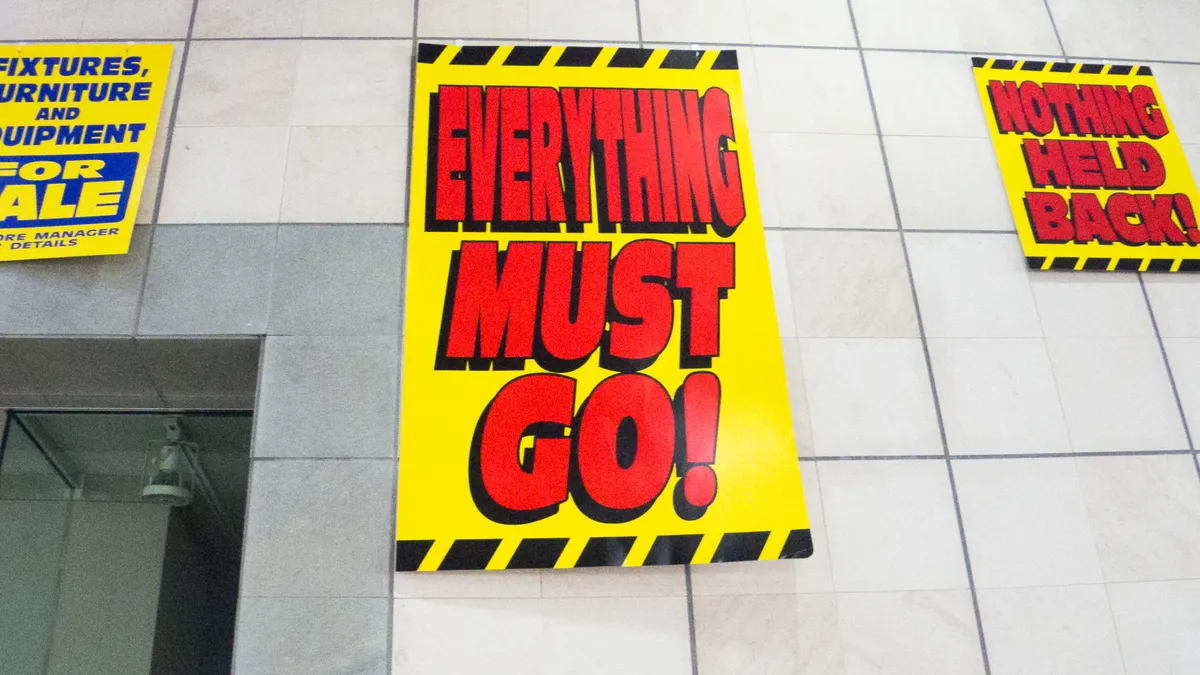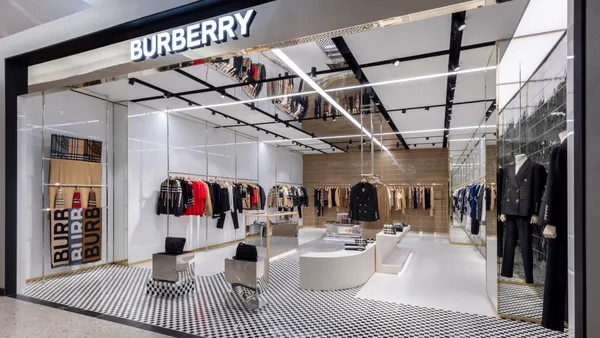Dive Brief:
- Strong operating performances led to last year's decline in retail bankruptcies, as did the wave of companies that filed in 2020, according to a new report from Fitch Ratings.
- Analysts noted that the bankruptcy class of 2020 included many companies that might have been able to continue on in the medium term but filed in 2020 for "strategic reasons" — namely, to reduce debt by converting it to equity as well as to exit leases
- At present, just four retail companies in the ratings agency's coverage universe are on Fitch's list of at-risk loans, down from nine a year ago. They are: Men's Wearhouse, Boardriders, Nine West Holdings and the multi-level marketing company Isagenix International.
Dive Insight:
The parade of retailers that filed in the spring and summer of 2020 almost unanimously cited the pandemic as the chief driver for seeking protection from creditors.
In reality, many of the companies that filed during that time had been financially stressed and losing market share long before the advent of COVID-19. J. Crew, Neiman Marcus, J.C. Penney and others all struggled with debt servicing, losses, market share depletion and unprofitable locations pre-pandemic. High debt loads were especially problematic, given the investment levels needed to keep up with the sales gains of online, mass market and off-price retailers.
To be sure, the revenue losses retailers suffered in 2020 during an extended period of store closures made life even more difficult. Those were bankruptcies that may have happened in 2021, 2022, 2023 and so on, but they happened in 2020 amid unprecedented market events.
In short, the year 2020 reduced the number of weak players in the field. Some were made at least relatively stronger through a bankruptcy by reducing debt and exiting unprofitable stores, among them J. Crew, Tuesday Morning, Guitar Center and Neiman Marcus. Others, including J.C. Penney and Brooks Brothers, sold themselves.
Still others simply disappeared from the brick-and-mortar world through liquidation. According to Fitch, liquidations account for 44% of real bankruptcy case outcomes (excluding supermarkets). That is well above the 11% average of cases ending in liquidation across all Fitch's coverage.
Fitch analysts said that this happens because retailers often lack a reason to exist. "The lack of proprietary products in many categories leaves retailers vulnerable to permanent traffic declines resulting from the rise of competitors, discounters and online-only companies," analysts said in the report. "Retail brand values, particularly mall-based apparel brands, can become irrelevant due to the changing tides of consumer sentiment."
The culling and reorganizations has reduced the number distressed retailers. For many, sales, margins and profits spiked last year as well, adding financial cushion along with robust financial markets that kept capital available to many who needed it. All of that has fueled dramatic turnarounds for some previously at-risk companies.
For now, the risks in the retail market remain low, by Fitch's tally. The analysts estimate 2022's default rate in the industry to be 3% at the end of the fiscal year, down from nearly 20% a year ago.















